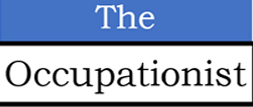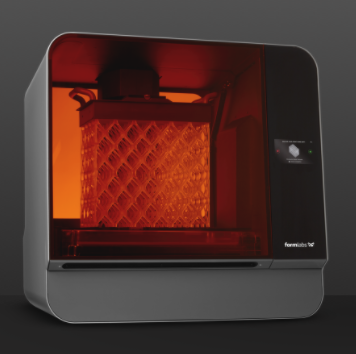Use of 3D printing (3DP) is on the rise. Few users know that 3D printers emit ultrafine particles (UFP) and volatile organic compounds (VOC), some of which are known irritants, carcinogens, and odorants.
As the use of 3D printing devices increases in classrooms and homes, it is necessary that users understand how to mitigate the potential health hazards.
We know that the fine beryllium dust from the machining process during use of CuBe (copper beryllium), a material often used in core and cavity manufacturing can cause a chronic lung condition known as berylliosis. Machinists have been long warned about it and those working with CuBe wear N95 masks to minimize / prevent breathing in these fine particles.
3D printers are more affordable than ever before and hence are being increasingly used, especially in the developed world (USA, Europe), by younger students in school classrooms to make playthings and for project work. Schools and students should know that 3D printers are manufacturing equipment that should be treated like a machine and take all precautions to work safely and prevent health effects.
Research from Chemical Insights, an institute of Underwriters Laboratories, and Georgia Institute of Technology, showed that desktop 3D printers emit ultrafine particles (UFPs) and volatile organic compounds (VOCs), some of which are known irritants, carcinogens, and odorants. Chemical Insights’ research found that exposure may present a human health hazard, especially when standing next to a 3D printer with minimal ventilation.
Users, including schools and students should know that 3D printers are manufacturing equipment that should be treated like a machine and take all precautions to work safely and prevent health effects.
Chemical Insights has created a 3D-printing toolkit, which is included in the US Department of Education’s Green Strides online resource portal 3D_Printer_School_Safety.pdf (greenstrides.org) and is available to schools nationwide. 3D Printer School Safety: A Guide for Supporting Indoor Air Quality & Human Health [ 3DPrinter-School-Safety(pdf) ] is the result of research performed by Chemical Insights dedicated to advancing safe and healthy working, learning, and living environments.
The guide explains how 3D printers emit UFPs and VOCs during operation and informs readers through research processes about key findings and unintended consequences on human health. The guide also suggests purchasing and operations strategies that teachers and parents can implement to mitigate chemical exposure to maintain safe and healthy indoor environments while using the technology.
Dr. Marilyn Black, Vice President and Senior Technical Advisor for Chemical Insights, said that the use of 3D printers at home and in classrooms “has skyrocketed because the technology inspires hands-on creativity and problem-solving by bringing a wide range of student ideas to life. However, those using 3D printers should know the unintended safety consequences and how best to mitigate those risks. Our informational guide will help administrators, teachers, and parents better understand how to safely use 3D printers.”
Desktop 3D printers are often used by companies in engineering laboratories, which also can be problematic. Chemical Insights offers the following recommendations:
- Avoid standing near a printer or hovering over it while it is in use
- set the nozzle temperature at the lower end of the suggested temperature range while maintaining print quality
- buy printers and print media that have been tested and certified to produce low emissions
- use filaments or print media specifically recommended for the printer by the manufacturer
The VOC emissions depend on the type of material being used:
- ABS (acrylonitrile butadiene styrene) filaments were found to emit more than 175 different VOCs
- Nylon filaments emit a range of different low-level VOCs
- PLA (polylactic acid) has a lower emission rate but was still found to produce more than 50 identified VOCs
The National Institute for Occupational Safety and Health (NIOSH) suggests the following additional measures users should take when operating a 3D printer:
- installing high-efficiency HEPA filters near printers
- 3D printing should be in a well-ventilated area
- placing the printer under a fume hood or near a vent that exhausts to the outside (similar to what machine/mold shops do in their graphite milling departments)
- using PPE such as safety glasses, face shields, lab coats or overalls and even considering the use of respiratory protection equipment, when appropriate.
An article written by Mark Wilson in Fast Company in November 2018 that addressed this topic quoted Georgia Tech professor Dr. Rodney Weber, who participated in a “landmark study” on the emissions of 3D printers. “To be honest, I wouldn’t be too concerned as long as you have good ventilation,” said Weber. “That’s what it comes down to. If you have a bunch of printers in one room like a classroom, you walk in and can smell plastic, then I’d be concerned about it.”
But by October 2019, Weber said “The toxicity tests showed that PLA particles were more toxic than the ABS particles on a per-particle comparison, but because the printers emitted so much more of the ABS—it’s the ABS emissions that end up being more of the concern.”
It is evident that research is ongoing and the scene is evolving. Until then, take care by doing what we know which has been enumerated in this article.
Like most jobs, the risk to health is there, however, as of now, they can be mitigated to ALARP (as low as reasonably practicable) by strictly adhering to:
- staying away from the room when 3D printing is on
- keeping the room well-ventilated
- using HEPA filters near printers
- buying certified machine and filaments (raw material)
- using N-95 mask (or even consider using respiratory protection equipment)
In future, when more and more industries start using 3D printers, the expertise of OH physician will be required to address these health risks as well. The role of OH physician will be to advise the employees and management regarding steps to be taken to minimize the risk to ALARP (as low as reasonably practicable).
For more information, readers may contact
_________________________________________________________________________________________________________
Dr Ajay Sati is an Occupational Health physician who prefers to describe himself as an Occupationist, to denote, ‘an expert in diseases and other concerns of occupations’. Dr Sati has managed health and wellness programs in industries he worked, like the atomic energy, and energy (oil & gas) in India and overseas. He was involved in many greenfield and brownfield projects providing inputs from health point of view. Known for SOPs and protocols, he is currently involved with an energy MNC in designing protocols to support employees during the covid pandemic, and protocols to safely reopen offices and plants.



